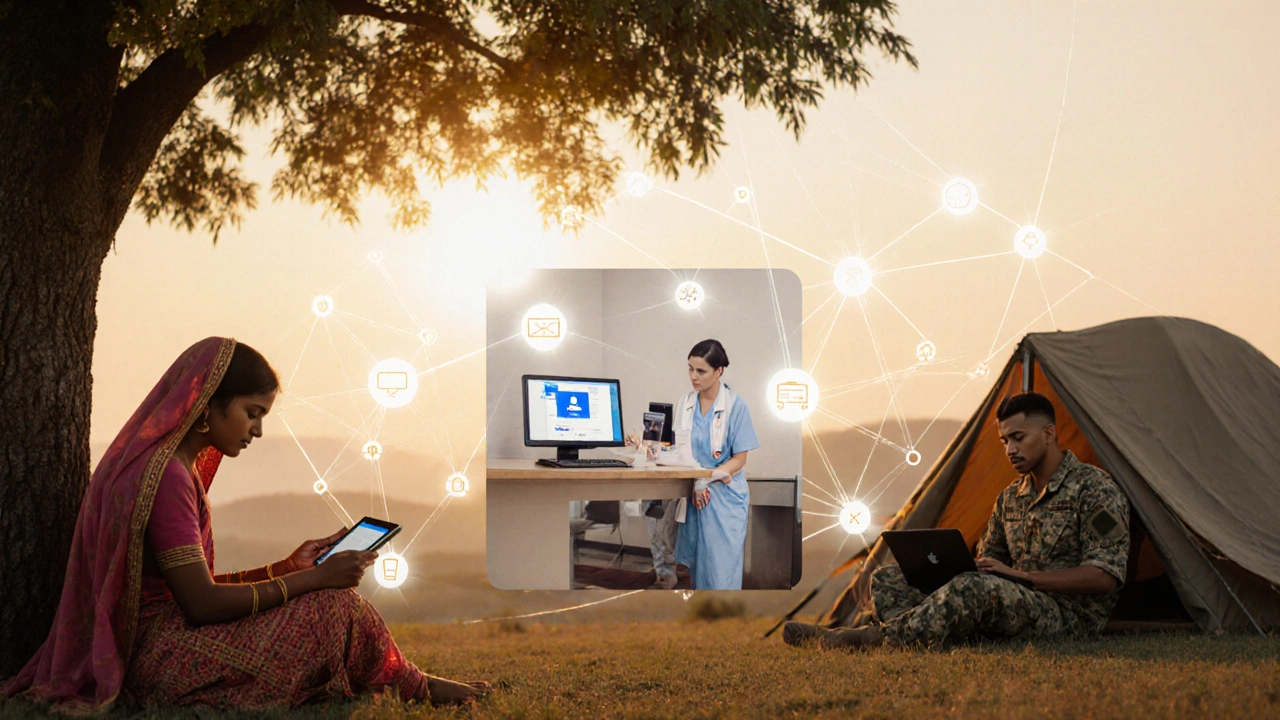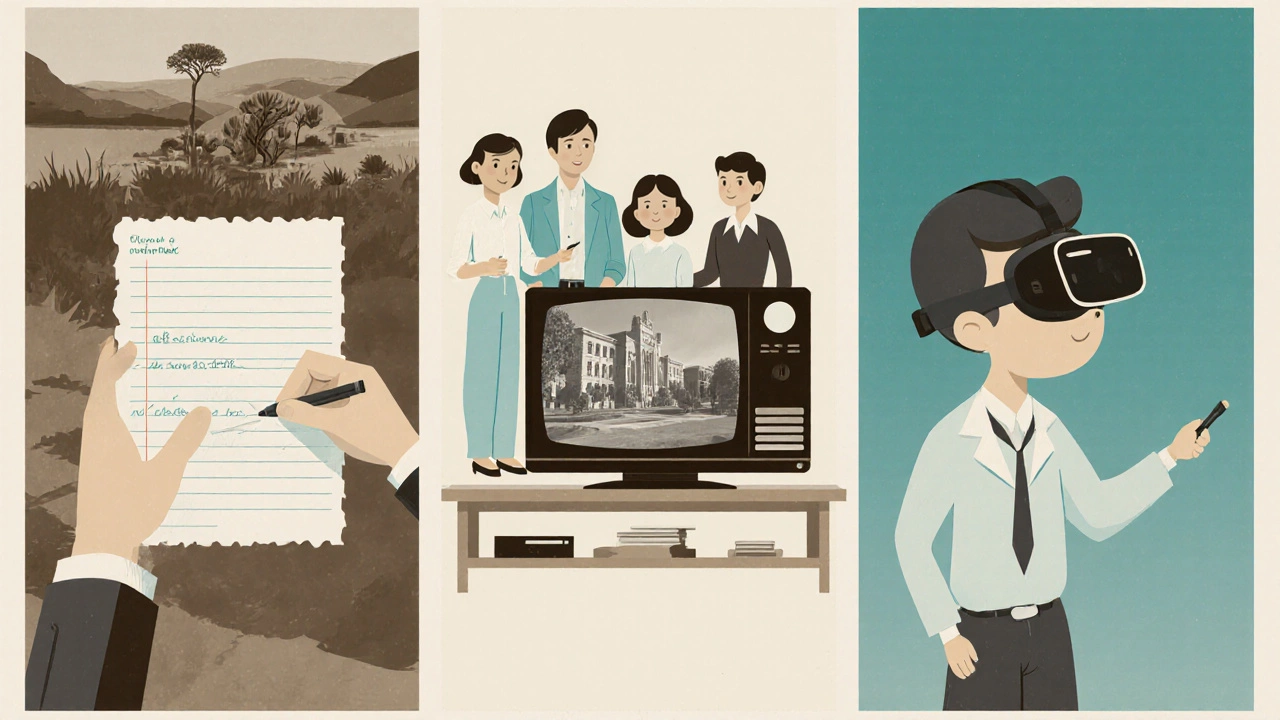
Distance Education Time Estimator
Calculate how much time you need to dedicate to distance education based on your current commitments. This tool helps you understand if your schedule can accommodate flexible learning.
Distance education isn’t just watching videos on a screen. It’s a fully structured way to learn without being in the same room as your teacher. For decades, people have earned degrees, certifications, and skills from kitchens, farms, military bases, and hospital shifts-all without stepping into a classroom. Today, it’s one of the most common ways people learn, especially those balancing work, family, or location limits.
What exactly is distance education?
Distance education is a formal learning system where students and instructors are physically separated, and communication happens through technology, mail, or other media. The key point? You don’t need to be in the same place as your teacher. That’s it. No campus. No daily commute. No fixed class times-though some programs do have schedules.
This isn’t new. In the 1800s, people in rural Australia and Canada took courses by mail. They’d get printed lessons, complete assignments, and send them back by post. Fast forward to the 1980s, and TV broadcasts delivered university lectures to homes. Now, it’s all online: video lectures, discussion boards, live Zoom sessions, and AI-powered quizzes.
It’s not just for adults. High school students in remote parts of New Zealand take NCEA courses through distance education. A single mom in Wellington studying nursing part-time? She’s using distance education. A soldier stationed overseas earning a business certificate? Same thing.
How is it different from online learning?
People mix up these terms all the time. But here’s the simple difference:
- Online learning means the course is delivered via the internet. That’s the tool.
- Distance education is the whole system-how the course is designed, delivered, assessed, and supported, regardless of the medium.
So, all online learning is distance education, but not all distance education is online. A student in rural Nepal might get lessons via radio, printed packets, and phone calls. That’s still distance education. It’s just not online.
Today, most distance education uses the internet because it’s faster, cheaper, and more interactive. But the core idea hasn’t changed: separation of learner and teacher, with structured support to bridge the gap.
How did distance education evolve?
The first recorded distance course was in 1840, when Isaac Pitman taught shorthand by mail in England. Students mailed back their writing samples. Pitman graded them and sent feedback. It worked. By 1890, over 100,000 people were enrolled in mail-based courses in the U.S. alone.
In the 1920s, radio became a tool. The University of Iowa broadcast lectures. In the 1950s, television followed. The Open University in the UK, launched in 1969, was the first major institution built entirely around distance learning. It used TV, radio, and printed materials. By 1980, it had over 100,000 students.
The internet changed everything. In the 1990s, universities started putting course materials online. By 2010, platforms like Coursera and edX made university-level courses free and global. Today, over 100 million people worldwide are enrolled in some form of distance education. In New Zealand, more than 40% of tertiary students take at least one course remotely.

What does a typical distance education course look like?
It’s not just uploading a PDF and hoping for the best. A well-designed distance course includes:
- Structured modules with clear goals and deadlines
- Video lectures (usually 10-20 minutes long)
- Interactive quizzes after each section
- Discussion forums where students reply to each other and instructors
- Assignments submitted online with detailed feedback
- Live Q&A sessions or office hours via Zoom or Teams
- Access to digital libraries, tutors, and technical support
Some courses are self-paced. Others follow a semester schedule with weekly deadlines. The best programs treat distance learners like they’re on campus-just with more flexibility.
For example, Massey University in New Zealand offers a full bachelor’s degree in agriculture through distance education. Students get lab kits mailed to their homes, video demonstrations of field techniques, and virtual labs using simulation software. They still have to pass practical exams-just not in a traditional classroom.
Who uses distance education-and why?
It’s not just for people who can’t get to school. Here’s who benefits most:
- Working adults who need to upskill without quitting their jobs
- Parents juggling childcare and study time
- People in remote areas with no local colleges
- People with disabilities who find campus access difficult
- International students who can’t move but want a foreign degree
- Retirees learning for fun or to stay mentally active
In 2024, a survey by the New Zealand Ministry of Education found that 68% of distance learners were employed full-time. Another 19% were caring for family members. Only 13% were traditional students under 20.
People choose distance education because it fits their life-not the other way around.

What are the challenges?
It’s not perfect. Here are the real problems people face:
- Isolation-Some miss the social part of school. Without campus chatter, it’s easy to feel alone.
- Self-discipline-If you’re not good at managing time, you’ll fall behind. No one’s there to remind you.
- Tech issues-Bad internet, outdated devices, or no tech support can block progress.
- Perception-Some employers still think online degrees are "less than." That’s changing fast, but it’s still out there.
Good programs fix these. They offer virtual study groups, mandatory check-ins, tech help desks, and career services. The best distance programs don’t just deliver content-they build community.
Is it recognized and respected?
Yes. In New Zealand, distance education degrees from accredited institutions (like the University of Auckland, Victoria University, or Unitec) have the same legal standing as on-campus degrees. Employers can’t legally treat them differently.
Universities abroad recognize them too. A distance MBA from a New Zealand university is accepted in the U.S., Canada, and the UK. Accreditation matters more than delivery method.
The World Bank reports that countries with strong distance education systems see higher workforce participation and faster economic growth. It’s not just a convenience-it’s a tool for equity.
What’s next for distance education?
AI tutors are starting to give real-time feedback on essays. Virtual reality labs let nursing students practice IV insertions in 3D. Blockchain is being tested to verify credentials instantly. In five years, you might get your certificate from a course you took on your smart fridge.
But the core will stay the same: learning without borders. The goal isn’t to replace classrooms. It’s to make learning possible for people who were left out before.
Is distance education the same as online learning?
No. Online learning is one way to deliver distance education-using the internet. Distance education is the broader system: it includes mail, radio, TV, and even in-person exams. All online learning is distance education, but not all distance education is online.
Can I get a degree entirely through distance education?
Yes. Many universities offer full bachelor’s, master’s, and even PhD programs through distance education. Institutions like Massey University and the University of Southern Queensland in Australia have been doing this for decades. Degrees are identical in value to on-campus ones.
Do employers accept distance education qualifications?
Yes, if the program is accredited. In New Zealand, Australia, the UK, and the U.S., accredited distance degrees have the same legal weight as traditional degrees. Employers care more about the institution and your skills than how you earned the degree.
Is distance education harder than regular school?
It’s not easier or harder-it’s different. You need more self-motivation. There’s no daily routine or peer pressure to keep you on track. But you also have more control over your schedule. Many people find it easier to balance with work or family.
Do I need to be tech-savvy to do distance education?
Not really. Most programs provide step-by-step guides for using their platforms. You just need basic skills: sending emails, uploading files, watching videos. Many institutions offer free tech support for students who need help.




